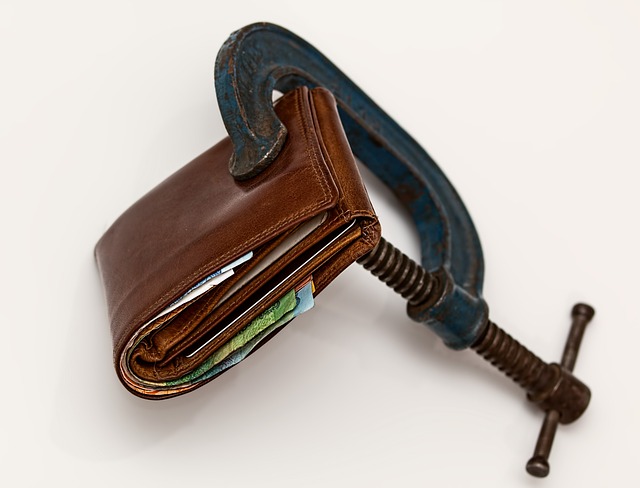Debt consolidation through secured or unsecured loans offers a strategic approach to managing multiple debts, with each type having unique pros and cons. Secured Debt Consolidation Loans utilize an asset (e.g., home, car) as collateral for lower rates and extended terms, but default risks asset loss. Unsecured loans lack collateral, carry higher rates, yet offer flexibility without asset exposure; ideal for minimal risk preferences or limited assets. The optimal choice depends on individual credit health, risk tolerance, and financial goals – secured for debt elimination, unsecured for short-term relief.
Looking to consolidate your debts but unsure about secured vs unsecured options? This guide breaks down the nuances of each type of loan, empowering you to make an informed decision. Understanding the differences in how these loans work, their unique advantages and drawbacks, and crucial factors like interest rates and collateral requirements is essential. By the end, you’ll be equipped to choose the best secured debt consolidation loan tailored to your financial needs.
- Understanding Secured and Unsecured Debt Consolidation Loans
- How Secured Debt Consolidation Loans Work
- Advantages and Disadvantages of Each Loan Type
- Factors to Consider When Choosing Between Secured and Unsecured Debt Consolidation
Understanding Secured and Unsecured Debt Consolidation Loans

Debt consolidation loans are a popular way to simplify and manage multiple debts, but there are two main types: secured and unsecured. Secured debt consolidation loans require borrowers to use an asset, typically their home or a vehicle, as collateral. This means if you fail to repay the loan, the lender has the right to seize and sell this asset to recover their money. Such loans often offer lower interest rates because the lender mitigates risk through the collateral.
On the other hand, unsecured debt consolidation loans do not require any collateral. Lenders base approval on your credit score and income, but if you default, they cannot seize any of your assets. These loans are generally more expensive with higher interest rates compared to secured options due to the increased risk for the lender. Understanding these differences is crucial when deciding which type of debt consolidation loan best suits your financial situation.
How Secured Debt Consolidation Loans Work

Secured debt consolidation loans involve using an asset—typically a property like your home or car—as collateral for the loan. This guarantees the lender that they’ll be repaid, often at a lower interest rate compared to unsecured loans. The process works by combining multiple high-interest debts into a single loan with a potentially lower interest rate and longer repayment term. This simplifies monthly payments and can save on overall interest costs.
Once approved, the borrower receives a new loan that pays off their existing debts. They then make regular payments on the consolidated loan, usually over an extended period. If they fail to repay, however, the lender has the right to seize and sell the collateral asset to recover the outstanding debt. This makes secured loans more risky but can be beneficial for those with good credit who want to consolidate multiple debts into a single, manageable payment.
Advantages and Disadvantages of Each Loan Type

Secured and Unsecured Debt Consolidation Loans: Weighing the Options
When considering debt consolidation, one key factor is whether to opt for a secured or unsecured loan. Secured Debt Consolidation Loans use an asset, typically real estate, as collateral. Advantages include potentially lower interest rates and longer repayment terms, as the lender mitigates risk through the collateral. However, this comes with a higher risk—if you default, you could lose the collateralized asset. Unsecured loans, on the other hand, don’t require collateral, making them risk-free for borrowers but often resulting in higher interest rates and shorter repayment periods to compensate for the increased risk for lenders.
Secured loans offer stability through fixed interest rates, predictable monthly payments, and the potential for debt reduction faster due to lower rates. Unsecured loans provide flexibility; you aren’t tied to an asset as collateral, allowing for more freedom in managing other financial needs. However, unsecured loans may have variable interest rates, increasing the possibility of higher monthly payments over time. The choice depends on your comfort level with risk, financial stability, and long-term goals, with each option presenting unique benefits and drawbacks tailored to different borrower profiles.
Factors to Consider When Choosing Between Secured and Unsecured Debt Consolidation

When considering debt consolidation, individuals often face a crucial decision between secured and unsecured loan options. This choice can significantly impact their financial journey, so it’s essential to understand the factors at play. Secured debt consolidation loans are backed by an asset, usually a person’s home or vehicle, which acts as collateral for the lender. This type of loan typically offers lower interest rates because the lender is less at risk. However, borrowers must be cautious; if they fail to repay, they risk losing the collateral. On the other hand, unsecured loans don’t require collateral but come with higher interest rates due to the increased risk for lenders. They are suitable for those with limited assets or who prefer not to put anything at stake.
Credit score and income stability are critical considerations. Secured loans might be more favorable for individuals with excellent credit, as they can secure better terms. Conversely, unsecured loans can be a safer bet for borrowers with lower credit ratings since the focus is less on collateral and more on repayment capability. Additionally, one’s financial goals should guide this decision; secured loans are ideal for debt elimination, while unsecured options may be better suited for short-term relief without the burden of long-term collateral risk.
When deciding between secured and unsecured debt consolidation loans, understanding your financial situation and long-term goals is key. Secured loans offer potential lower interest rates and better terms, but require collateral, while unsecured loans provide flexibility without the need for collateral, yet may come with higher rates. After weighing the advantages and disadvantages, consider your creditworthiness, the purpose of the loan, and your ability to repay. Making an informed choice between these loan types can lead to effective debt management and financial stability. Remember, choosing the right debt consolidation method is a significant step towards achieving financial freedom.
